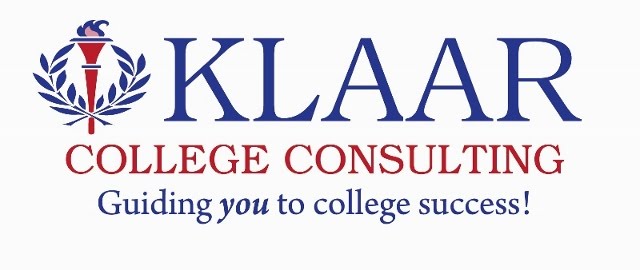Searching for the right college can be stressful for both
students and parents. The costs of tuition, room and board, along with thinking
about their child’s happiness, are parent’s main concerns. Meanwhile, students
worry about fitting in, the food plan and which club(s) they should join. While
both parties have different concerns, they share the same stress, and are looking
for guidance to help make the right decisions and alleviate the pressure. For
students and parents who are planning ahead, that stress may start as early as
sophomore year!
College consultants such as Klaar College Consulting can
help alleviate the stress – and lead families to college choices that are the
best fit financially, academically and socially.
I recently did a live webinar on how students can get
into and stay – at their “dream” college.
To view the full webinar, go to: https://www.collegeessayorganizer.com/webinars/videos/college_list_081913.mov.
Throughout the discussion, one of the main points that
we discussed is that by choosing the right school, students are far less likely
to transfer or drop out. But with so much riding on this choice—financially and
otherwise—how do students and their parents pick the right school?
First,
Know Yourself
One of the first things I have students do before even
beginning their college search is to assess what they know about themselves.
Far too often, I’ve met students who profess to love big cities, but when I’ve asked
“how often have you been to a large city?” they say “never!”
I spend a considerable amount of time connecting with my
students in order to determine what they are really looking for. I always ask them to dig deeper and get to
know who they really are, because this will make a significant impact on which
schools they choose to apply to.
Likely,
Target and Reach Schools
Another key point that I outlined in the webinar is the
difference between Likely, Target, and Reach college choices. These three categories represent different
schools for each student, based on their financial resources, personality, location,
etc.
A number of questions regarded the admissions process; one
participant asked if their student should apply to more than 10 schools. I strongly advised against that, as it shows that
the student doesn’t understand him or herself.
Instead, I counsel my students to use the Safety, Target
and Reach school categories, with the majority of their choices falling within
the Target range. Target schools give the student approximately a 50 percent possibility
of being accepted, as compared to a 75 percent chance of acceptance for the Likely
schools and 25 percent for the Reach schools.
Should
You Know Your Major?
Another student asked if they should have a major chosen
before they decide on a college. Not
necessarily. Sometimes it’s helpful to know your major beforehand, as in the
case of future doctors, but most schools I’ve encountered offer the ability to
wait to choose a major until after your freshman year, which I highly recommend.
Choosing a school you feel you’ll be successful in is
more important than selecting your major. Again, ask yourself whether you prefer a city
or rural atmosphere, a large or small campus and class sizes, and being near or
far from home. Answering these types of questions will help students make a
truly informed college choice.
The admissions process can be daunting and complicated. An
independent educational consultant, like me or one of my colleagues, can help
students and parents make logical decisions for the future.








